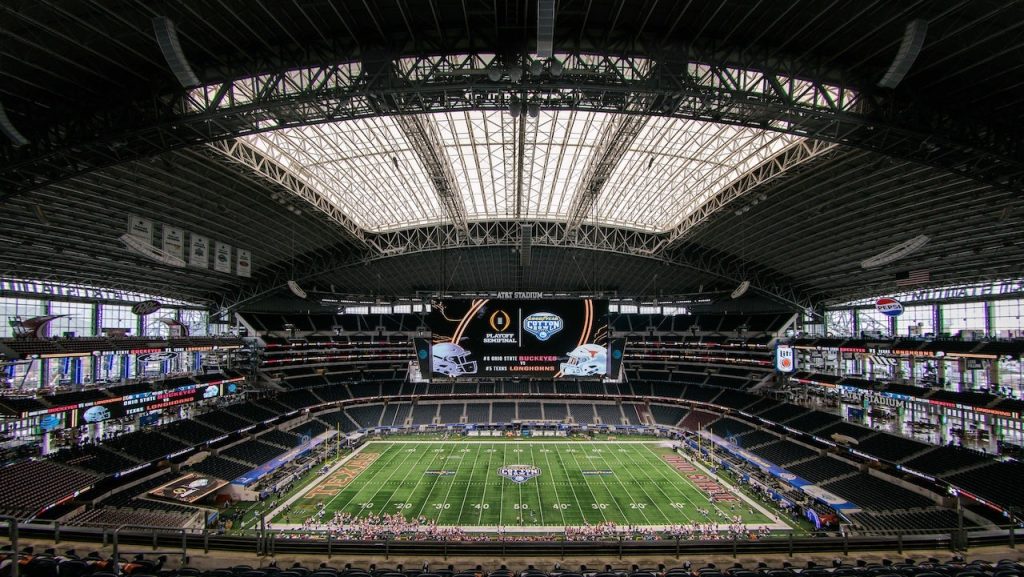The 89th Cotton Bowl Classic, played on Friday night between Ohio State and Texas, became another focal point in the ongoing conversation surrounding sports, patriotism, and social commentary. ESPN’s broadcast of the game included a pre-game prayer delivered by Fred McClure, former chair of the Cotton Bowl Athletic Association. This decision, seemingly benign on the surface, occurred within a larger context of controversy surrounding ESPN’s handling of the national anthem at other bowl games that week. The prayer itself, offered after a moment of silence for victims of the California wildfires and the New Orleans terror attack, touched on themes of safety, sportsmanship, and social justice, asking for divine guidance for the players, gratitude for the freedom to compete, and a call to address societal barriers through kindness and respect.
The inclusion of the prayer comes on the heels of significant backlash directed at ESPN for its initial decision to omit the national anthem broadcast during the Sugar Bowl, which was postponed from January 1st to January 2nd following the New Orleans attack. The network’s subsequent airing of the anthem during a “SportsCenter” broadcast later in the week did little to quell the criticism, with many viewers perceiving the gesture as insufficient and belated. This incident highlighted the delicate balance networks must navigate in addressing sensitive social and political issues while broadcasting sporting events. The decision to air the prayer at the Cotton Bowl, while not directly related to the national anthem controversy, further underscores the complexities of these decisions and their potential to spark public debate.
ESPN’s handling of the anthem at the Sugar Bowl was not the only controversy surrounding the game. Allstate CEO Tom Wilson faced a similar wave of criticism for a video message aired before the game, in which he linked the New Orleans attack to an “addiction to divisiveness” in America. Wilson’s message urged viewers to “accept people’s imperfections and differences,” a sentiment that, while seemingly well-intentioned, ignited accusations of politicizing a tragedy and minimizing the impact of the terrorist attack. The ensuing backlash, which included threats of policy cancellations by Allstate customers, prompted the company to remove the video from its social media platforms. This incident further illustrates the challenges faced by corporations attempting to address complex social issues within the context of sporting events.
The confluence of these events – the prayer at the Cotton Bowl, the national anthem omission at the Sugar Bowl, and Allstate’s controversial message – reveals the heightened sensitivity surrounding sports broadcasts in a politically charged environment. The traditional role of sports as an escape from everyday concerns is increasingly blurred as networks and sponsors grapple with how to acknowledge and address significant societal issues. The resulting controversies demonstrate the potential for even seemingly innocuous gestures, like a pre-game prayer, to become lightning rods for public debate, particularly when occurring amidst broader conversations about patriotism, social justice, and corporate responsibility.
The backdrop of these controversies serves to highlight the evolving expectations placed upon sports broadcasters and sponsors. While traditionally focused on delivering entertaining athletic competitions, they now face increasing pressure to navigate complex social and political landscapes. The decision to air a prayer, omit a national anthem, or deliver a message of unity can all be interpreted through various lenses, leading to both praise and condemnation. This necessitates a careful and considered approach, one that acknowledges the diverse perspectives of viewers and aims to strike a balance between acknowledging important issues and maintaining the integrity of the sporting event itself.
Ultimately, the incidents surrounding the Cotton Bowl and Sugar Bowl underscore the ongoing evolution of sports broadcasting and its intersection with broader societal issues. As networks and sponsors grapple with how to address these complexities, the potential for controversy remains ever-present. The decisions made in these moments not only shape the viewing experience but also contribute to the ongoing conversation about the role of sports in our culture, its power to unite and divide, and the responsibilities of those who broadcast and sponsor these events. The incidents served as a stark reminder of the charged environment surrounding sports broadcasting and the need for careful consideration of the broader social and political context.

